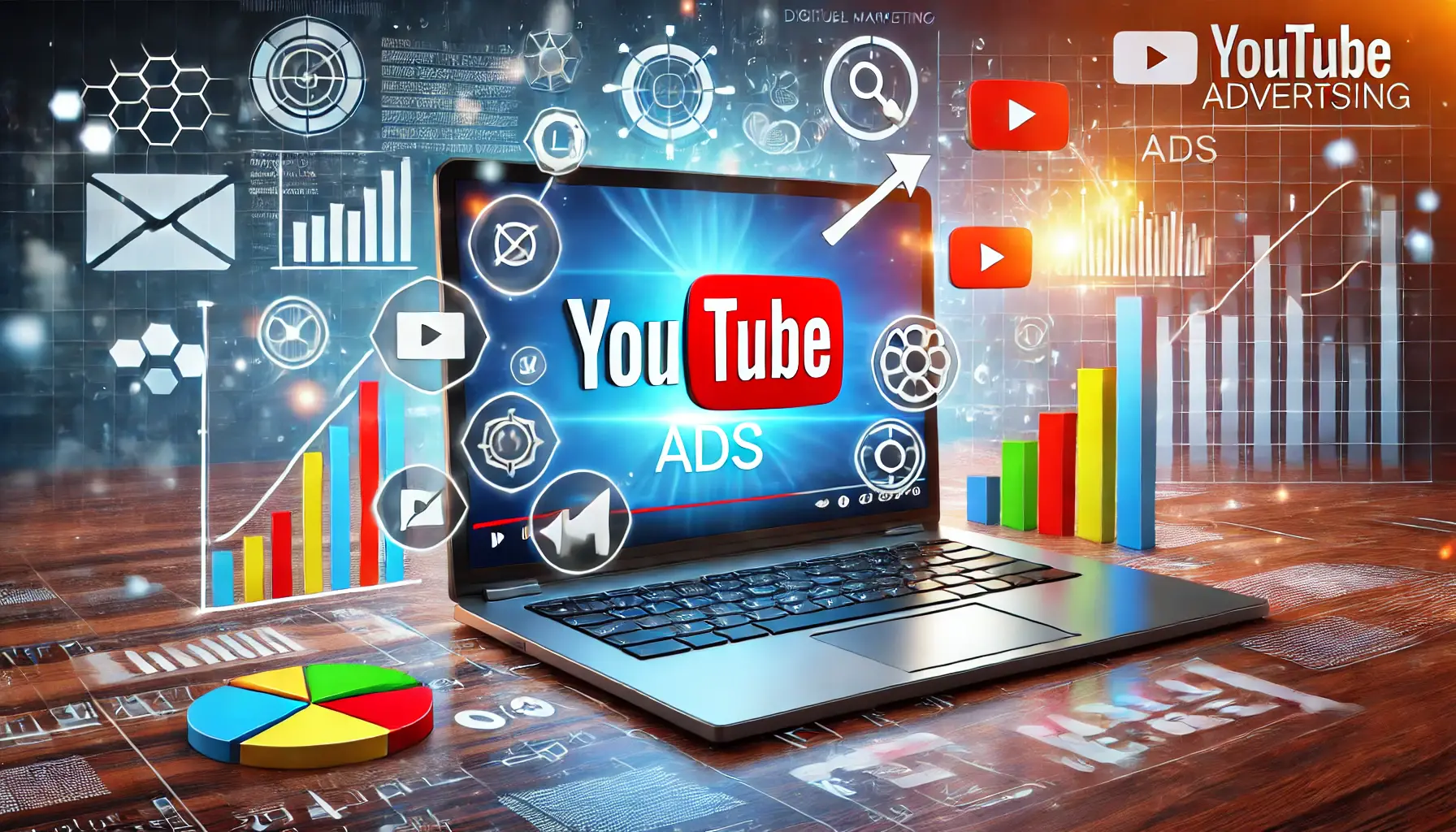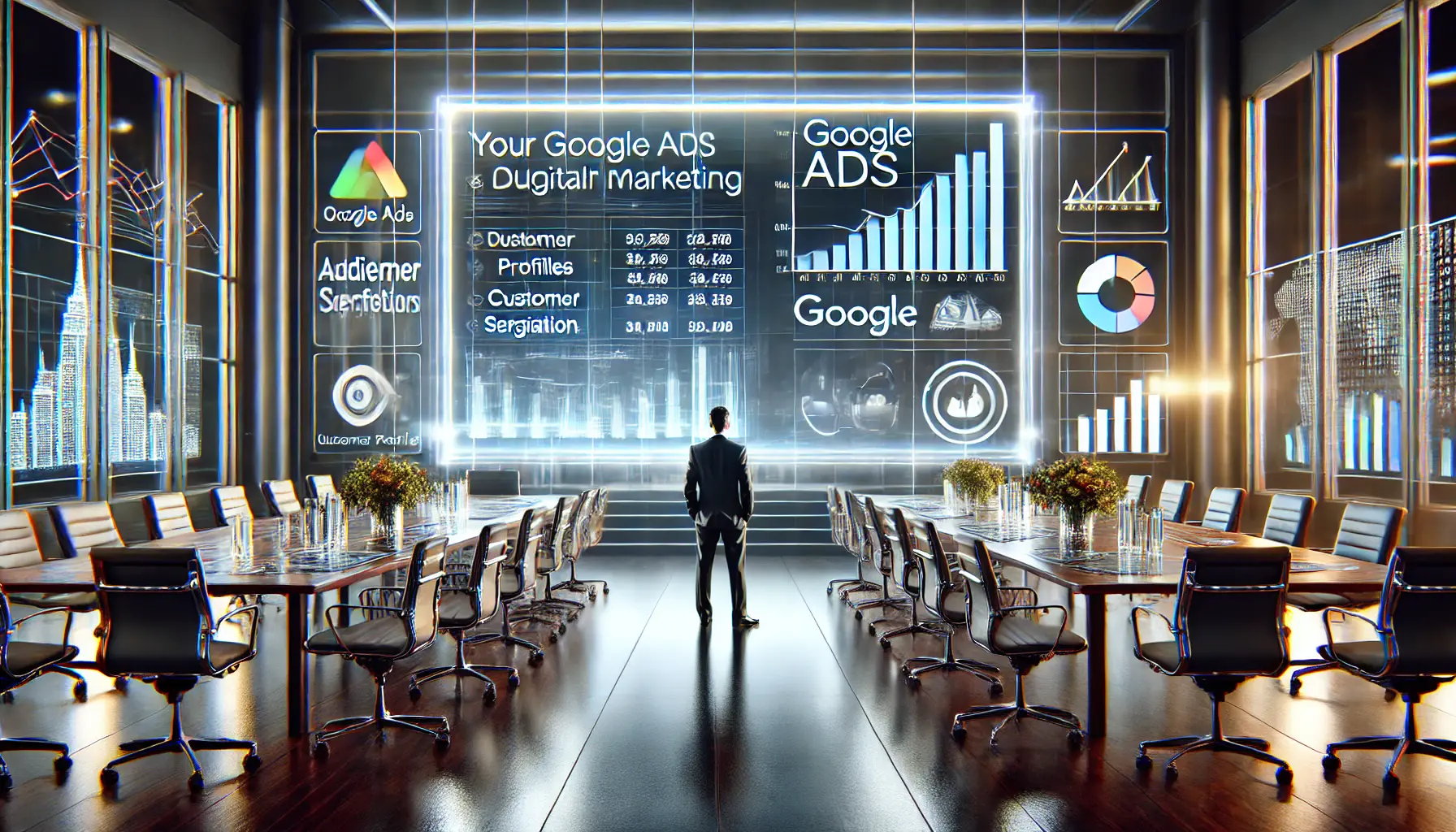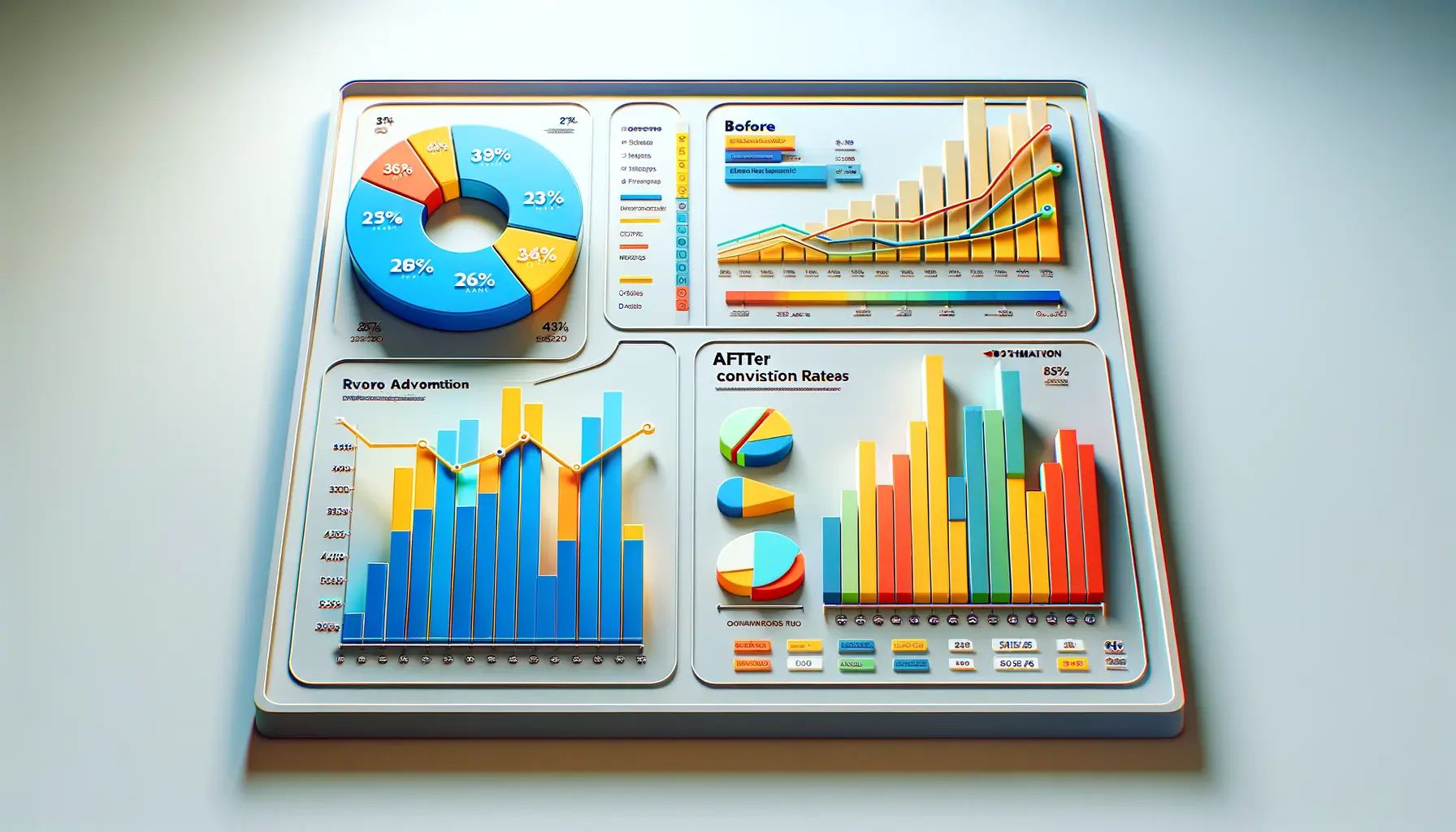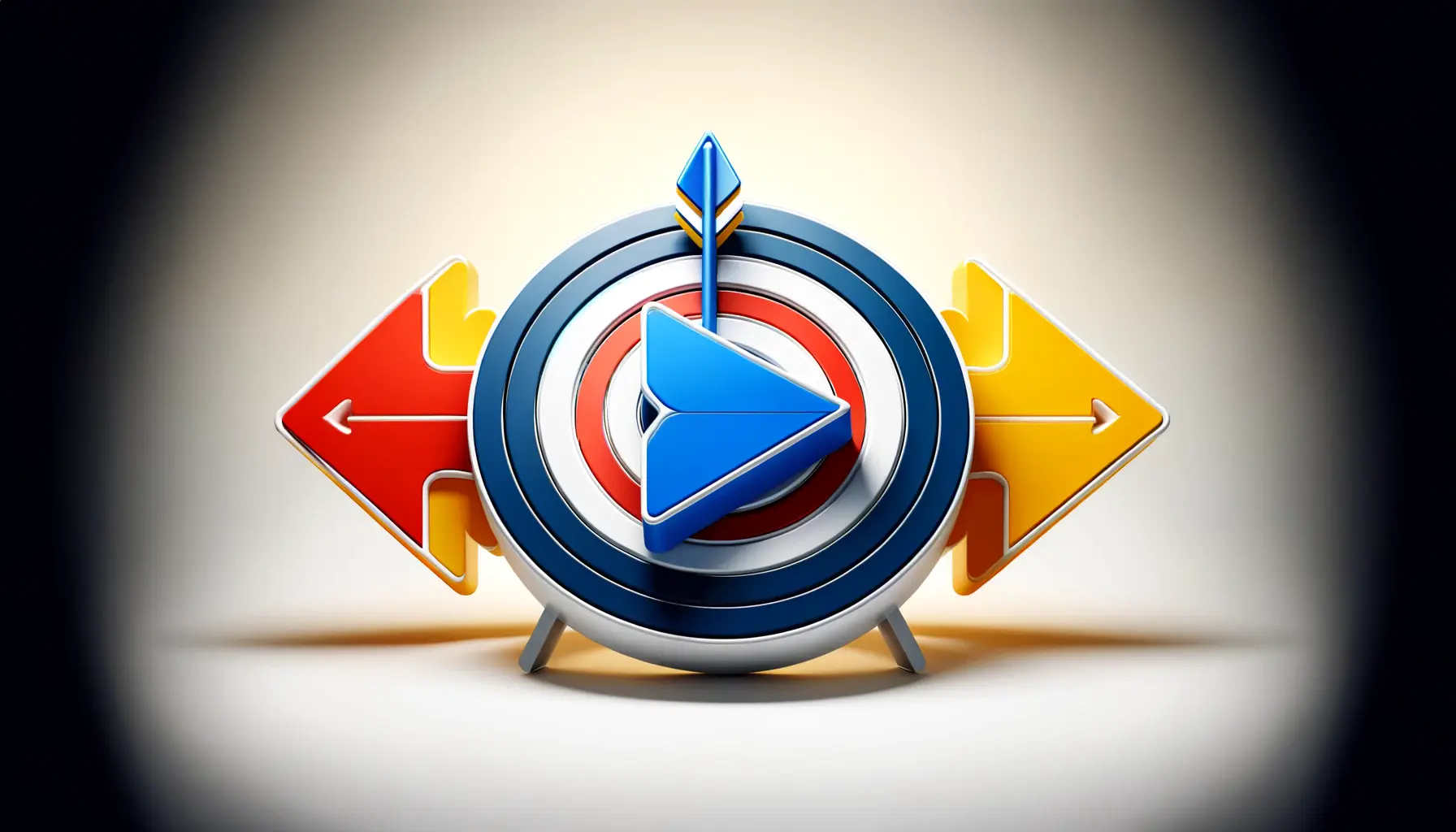In the modern virtual space, YouTube advertising has grown to be one of the most influential means of communicating and creating an impact on a target audience.
However, securing views may be one thing; it is turning those viewers into active customers that truly measures success.
Whether you’re a small business entrepreneur or a digital marketing expert, finding effective ways to increase conversion ratesThe percentage of users who take a desired action after viewing an ad. in YouTube advertising can make a significant difference in your campaign results.
In this guide, we will consider five critical steps that will help optimize your YouTube ad campaign, ensuring your ads reach the right audience, persuade them to take action, and even more.
Conversion rates are more than just numbers; they reflect how well your ad resonates with the audience and drives them to connect with your brand.
Apply these tested methods to enhance your ad’s power and ensure that your target audience interacts meaningfully with your ads.
First things first: let’s begin with how to optimize your ad targeting to reach the right people.
- Optimize Ad Targeting to Reach the Right Audience
- Crafting Compelling, Engaging Ad Content that Converts
- Improve Ad Placement to Reach Maximum Visibility
- Tap into Data and Analytics to Optimize
- Continuously Improve through Testing and Refining of Ads
- Mastering Conversion Rates in YouTube Ads: A Summary
- 10 FAQs About YouTube Ads Conversion Rate Optimization
Optimize Ad Targeting to Reach the Right Audience
When it comes to increasing conversion rates of YouTube ads, reaching the right audience is paramount.
No matter how appealing your ad content might be, unless it appears to individuals interested in what you offer, conversions will be hard to achieve.
That is why optimizing ad targeting is crucial.
By refining your targeting, you make sure your ads appear to people who are most likely to click and convert.
Below, we’ll cover some of the best strategies for pinpointing the ideal audience for your ads.

A representation of audience persona analysis in digital marketing.
Define Your Ideal Viewer Persona
Before diving into YouTube’s targeting options, it’s essential to have a clear idea of who you’re trying to reach.
Define the characteristics of your ideal viewer, including their interests, demographics, and behavior.
Think about questions like: What are their main challenges?
What kind of content do they consume on YouTube?
The process of creating a viewer persona helps you align your messaging and targeting with potential customers.
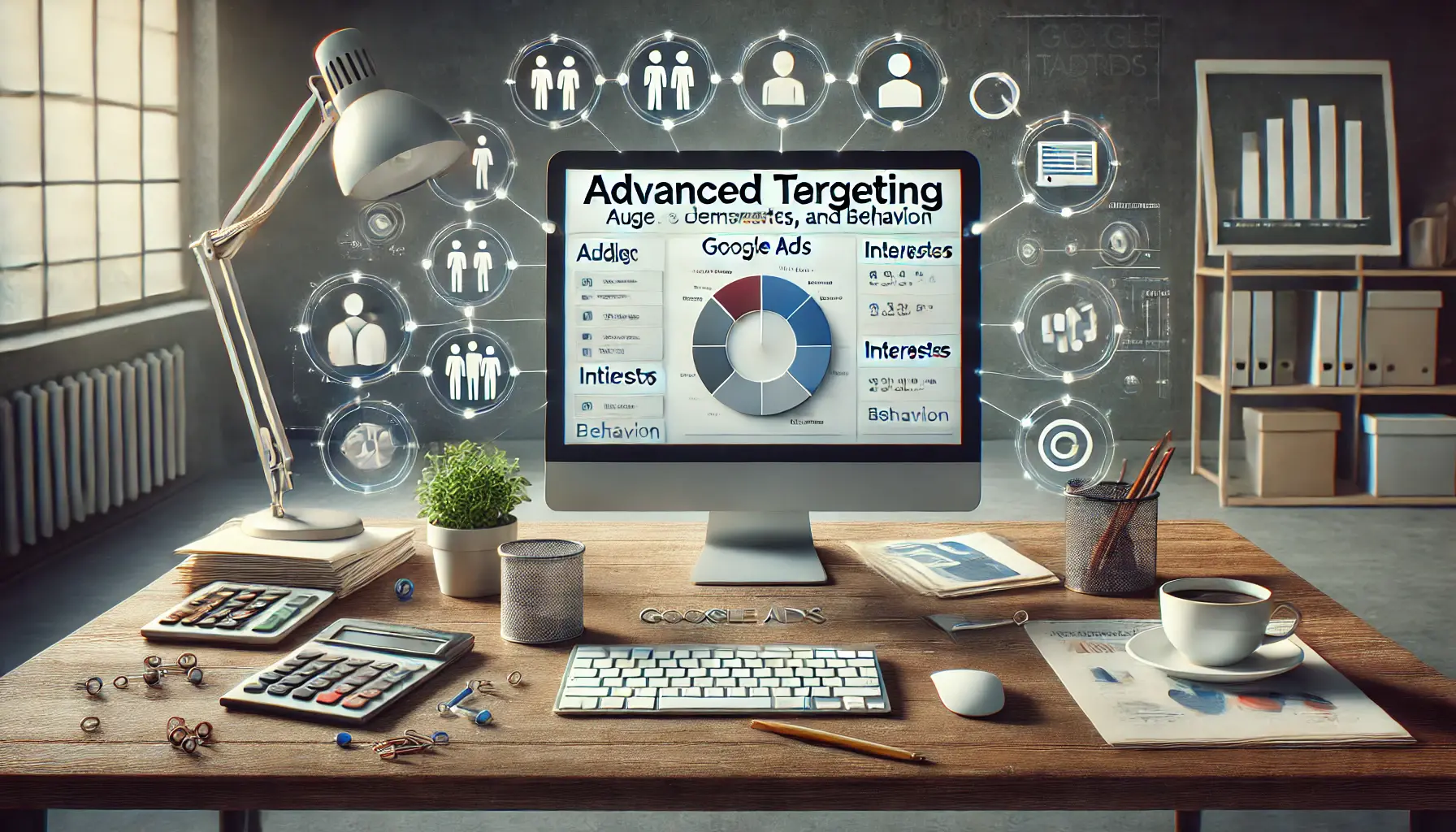
Illustration of using advanced targeting options in Google Ads for effective audience reach.
Leverage Advanced Targeting Options in Google Ads
Google Ads offers a range of targeting tools to help you reach the right viewers for your YouTube ads.
You can use demographic targetingTargeting based on characteristics such as age, gender, and income. to select specific age ranges, genders, and household incomes, or affinity audiencesAudiences based on users' interests and online behaviors, as defined by Google. to target viewers based on their interests and online behaviors.
Additionally, in-market audiencesAudiences actively researching or purchasing products or services similar to those offered. ensure that some of the viewers seeing your ads are actively searching for products or services like yours, making it a powerful option for conversion-driven campaigns.

An illustration of retargeting strategies aimed at increasing conversions.
Retarget for Higher Conversions
Retargeting increases the odds of converting viewers who have previously interacted with your brand.
With Google Ads, you can enable retargetingShowing ads to users who have previously interacted with your brand. so that your ads appear to viewers who previously visited your website, watched other videos, or engaged with your YouTube channel.
This keeps your brand top of mind and encourages these viewers to convert.
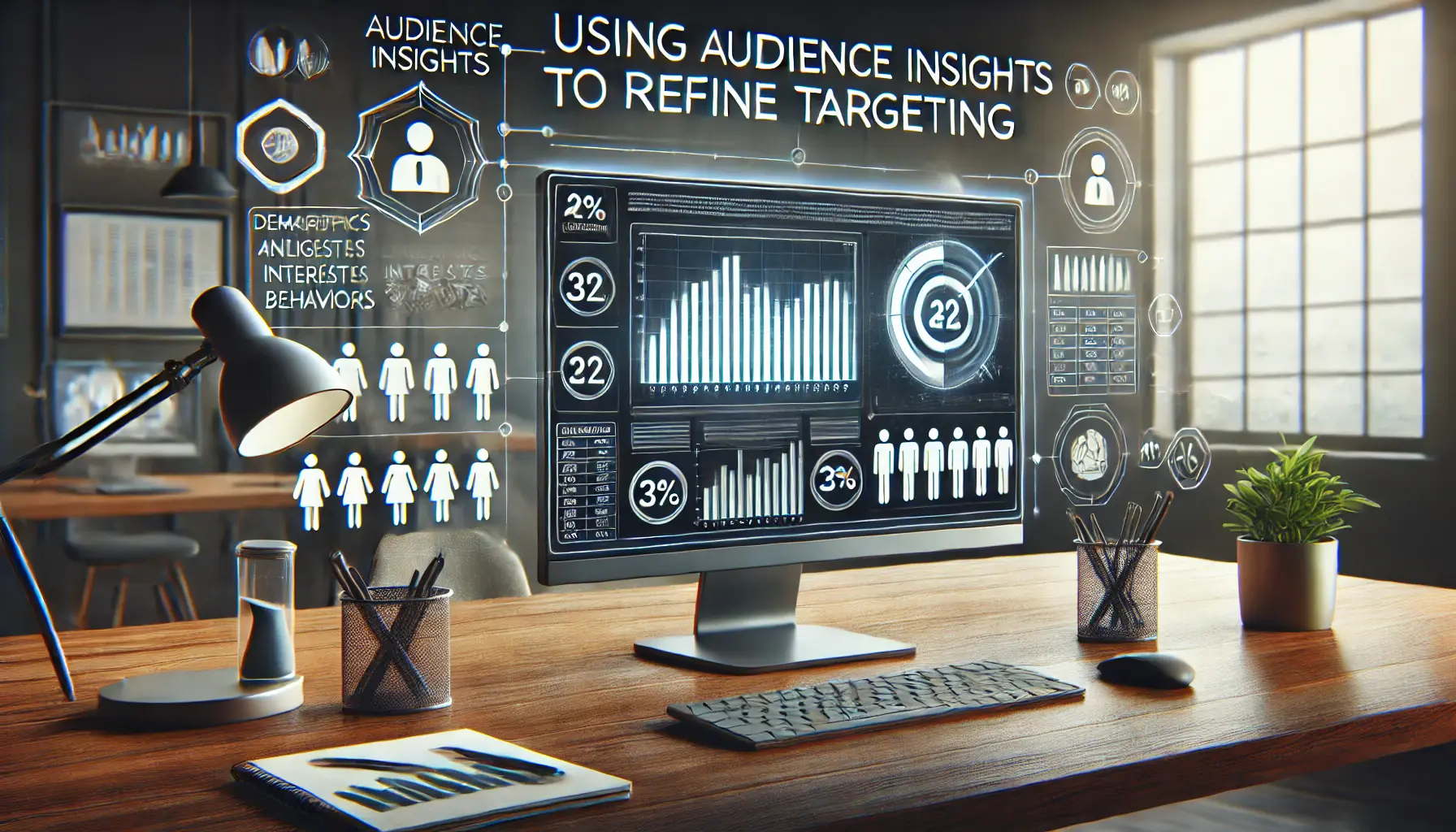
Visual representation of using audience insights to enhance targeting strategies.
Find and Utilize Audience Insights to Refine Targeting
As your campaign continues to run, make sure to use YouTube’s analytics to understand how your ads are performing with different audience segments.
Check metrics like watch time, click-through rate, and engagement to see which audience segments are most responsive.
Use this data to further refine your targeting strategy and achieve the best conversion rates possible.
By optimizing your ad targeting and carefully selecting your audience, you lay a strong foundation for better conversion rates.
Next, let’s move ahead to understand how creating compelling ad content can boost your campaign’s effectiveness.
Targeting the right audience is crucial to achieving high conversion rates, ensuring your ads appear to those most likely to engage with your brand.
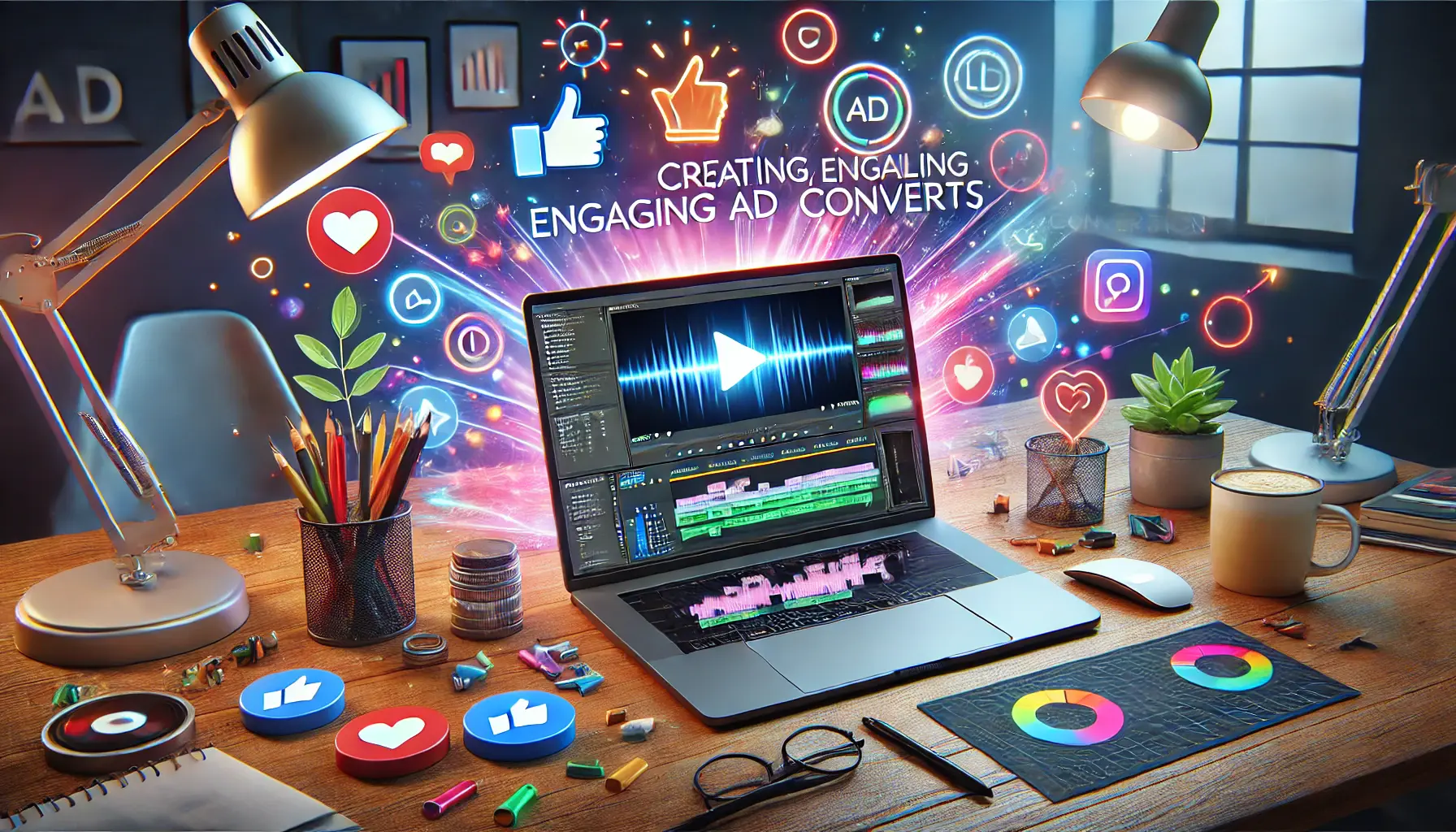
A visual representation of crafting engaging ad content designed to drive conversions.
Crafting Compelling, Engaging Ad Content that Converts
After you’ve optimized your targeting for efficiency, the next crucial step to improve conversion rates with YouTube ads is to create compelling and engaging ad content.
Effective ad content is the ingredient that captures the viewer’s attention and maintains their interest long enough to motivate them to act.
To make a lasting impact, your ads must resonate with viewers, deliver a clear message, and encourage them to engage with your brand.
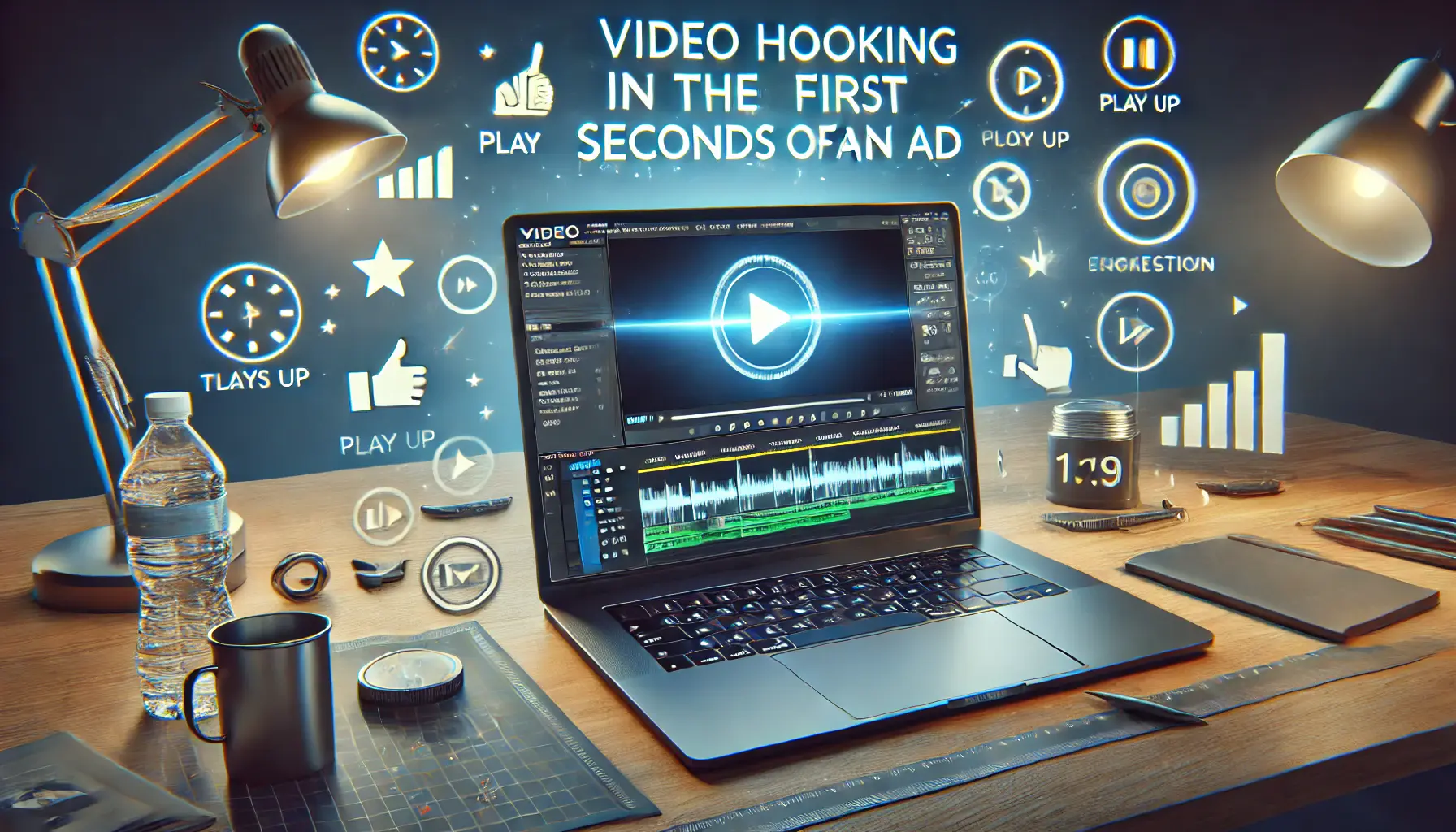
An illustration of capturing viewer attention in the first few seconds of an ad.
Hook Viewers in the First Few Seconds
The opening moments of your ad are essential.
Viewers on YouTube often decide within the first 5 seconds whether they want to keep watching or skip the ad.
Start with a striking scene, a bold statement, or a provocative question that resonates immediately with the interests of your target audience.
A strong hook is especially crucial for skippable ads, as it can make the difference between a skip and a click.

Illustration of using storytelling in ads to foster an emotional connection with viewers.
Use Storytelling to Connect Emotionally
Consider how your product or service fits into a viewer’s life, and craft a story that resonates with that perspective.
By showing real-life applications and benefits, you can help viewers see themselves using your product or service, making them more likely to take action.
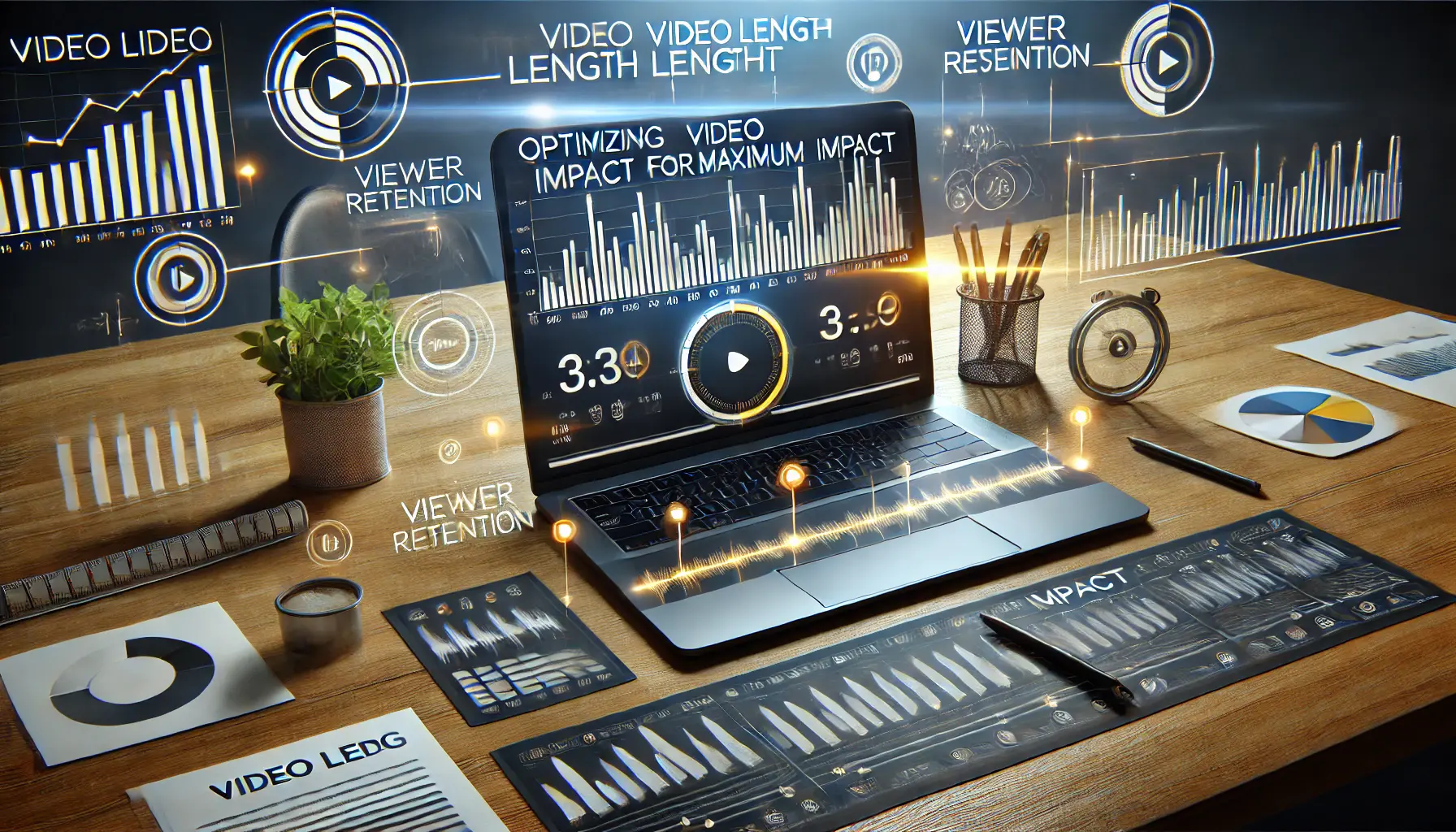
An illustration of optimizing video length to achieve maximum viewer impact.
Optimize Video Length for Maximum Impact
Short ads, typically around 15-20 seconds, are effective for brand awareness, while longer ads, running 30 seconds to a minute, can work well if the content is engaging and informative.
Each format serves a different purpose: short ads deliver a concise message quickly, while slightly longer ads provide more context or tell a fuller story, helping drive higher conversions.

Illustration of incorporating a clear and actionable CTA in digital ads.
Add a Clear and Actionable CTA
One of the most important components of driving conversions is a strong call-to-action (CTACall-to-action; a prompt that encourages viewers to take a specific action.).
Your CTA guides the viewer on what to do next, whether it’s visiting your website, learning more, or making a purchase.
Use action words like “Shop Now,” “Learn More,” or “Get Started” to create urgency and prompt viewers toward the next step.
Enhance this by adding interactive elements, such as end screens or overlays, to complement your CTA.
Creating engaging ad content isn’t just about making a beautiful video; it’s about delivering a message that resonates and drives action.
By drawing attention from the start, telling a relatable story, optimizing the length, and including a clear call-to-action, you will significantly increase your chances of converting viewers into customers.
Now, let’s look at how ad placement can further enhance visibility and conversions.
Compelling ad content with a clear message and emotional connection is key to capturing interest and motivating viewers to take action.

An illustration of optimizing ad placement for maximum visibility in digital marketing.
Improve Ad Placement to Reach Maximum Visibility
Even the most efficiently targeted ads with great content will not yield good results if their placement is poor.
Ad placement determines where, when, and how your ad displays to users.
Choosing the right approach can make a significant difference in conversion rates.
YouTube offers various ad formats and placement options, each with unique advantages for reaching specific audiences and driving action.
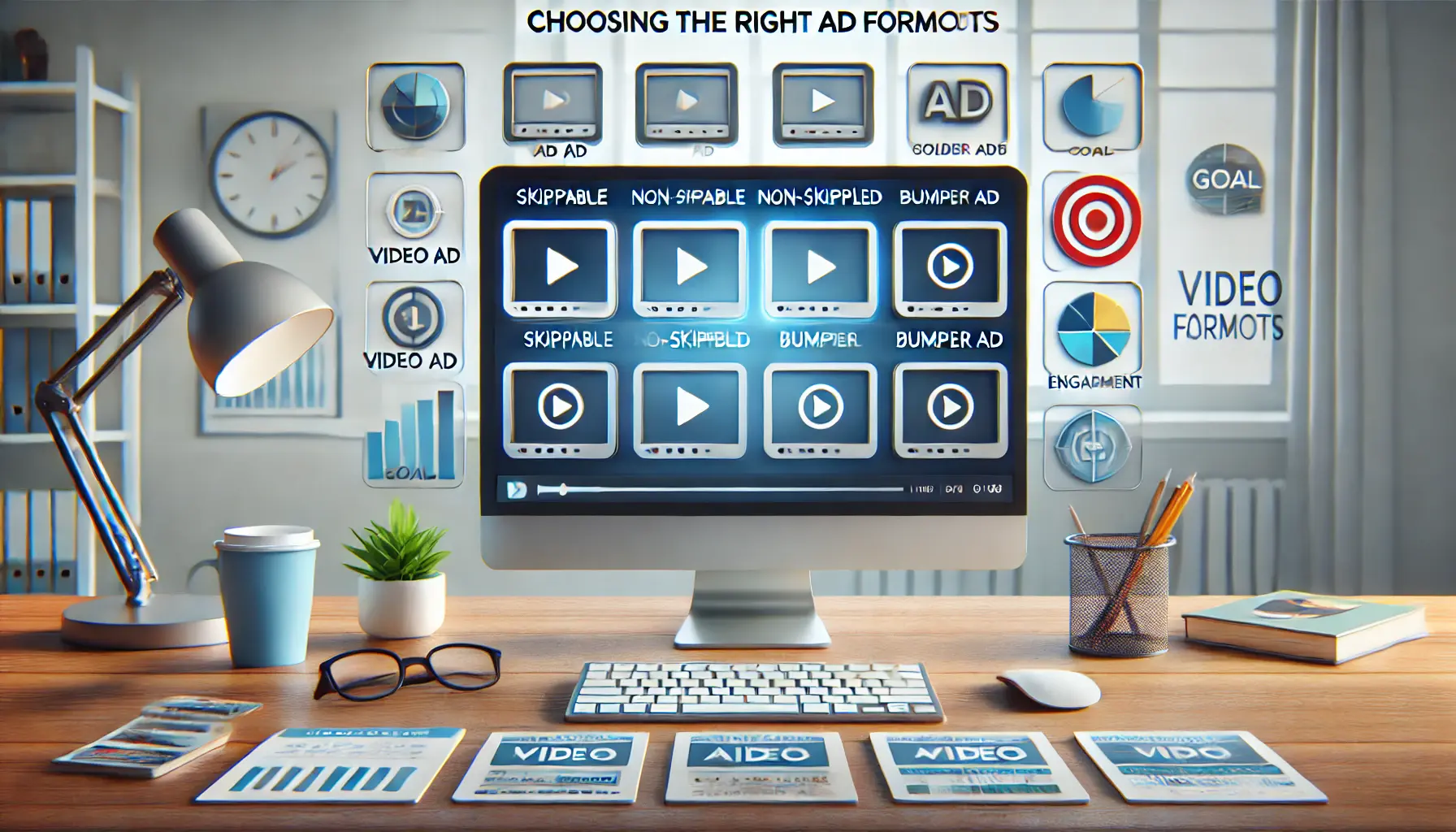
An illustration of selecting appropriate ad formats to align with marketing goals.
Choose the Right Ad Formats for Your Goals
Different ad formats suit different campaign objectives.
For example, skippable in-stream ads work well when you want to generate awareness while giving viewers the option to skip after 5 seconds.
In contrast, non-skippable ads ensure your message is fully viewed, which can be beneficial for brand messaging if a 15-second window suffices.
Bumper ads, coming in at just six seconds, work best for short, snappy messages that prioritize visibility rather than deep engagement.

Illustration of testing different ad placement options for optimal results.
Experiment with Different Placement Options
Focus on high-engagement channels or videos relevant to your product to increase the likelihood of reaching people already interested in similar topics.
Consider placing ads on popular channels within your niche or targeting videos that closely align with your product to maximize impact.
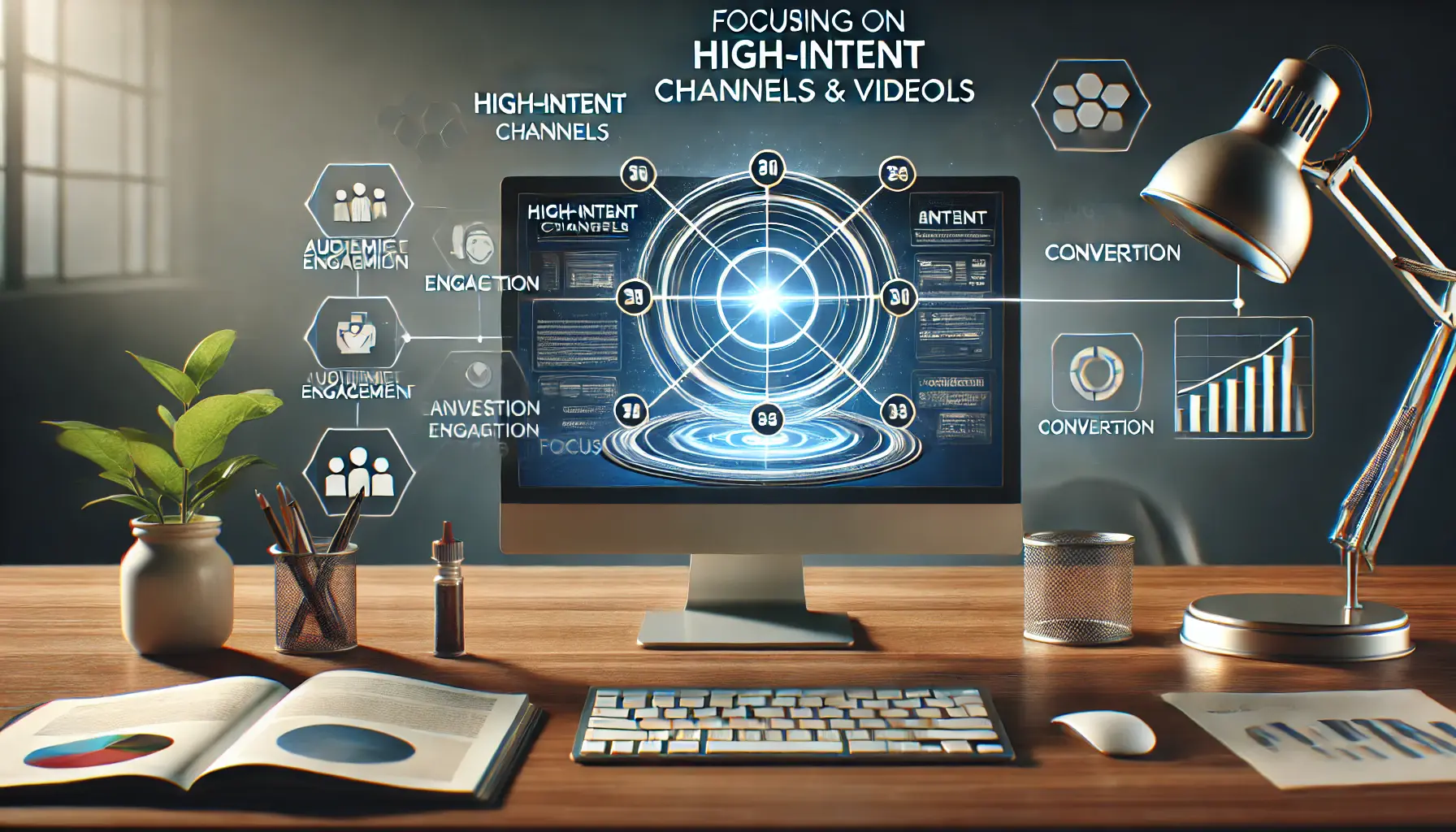
Illustration of targeting high-intent channels and videos for effective ad placement.
Focus on High-Intent Channels and Videos
For example, if you’re selling a fitness product, you may achieve higher conversions by running ads on workout tutorials or health-related channels rather than general entertainment videos.
This approach ensures your ad gets attention from people already interested in the content, increasing the likelihood of engagement and conversions.

Illustration of monitoring and optimizing ad placement performance.
Monitor Placement Performance and Optimize
Use YouTube analyticsA tool within YouTube to track performance metrics like watch time and engagement. to track key performance metrics such as watch time, click-through rates, and engagement levels for each placement.
This data can help you identify which placements perform best, enabling a more refined placement strategy that focuses on high-converting options.
By carefully choosing ad formats, experimenting with various placements, and continuously optimizing based on data, you can achieve maximum visibility and effectiveness for your YouTube ads.
In the following section, we’ll explore how to use data and analytics to further refine your campaign.
Strategic ad placement can significantly enhance visibility, helping your ads reach viewers at the right time and on relevant channels.

Illustration of using data and analytics to optimize digital marketing strategies.
Tap into Data and Analytics to Optimize
Data and analytics play a crucial role if you want to improve your YouTube ad conversion rates effectively.
Insights from data allow you to fine-tune your ads, targeting, and placements based on viewer behavior and preferences.
Both YouTube and Google Analytics provide valuable information that can help you optimize ad performance at each step.
Illustration of configuring conversion tracking in Google Analytics for digital campaigns.
Set Up Conversion Tracking Using Google Analytics
One of the initial steps for data-driven optimization is to set up conversion tracking with Google Analytics.
This tool allows you to measure actions taken by viewers after they click on your ad, such as purchases, sign-ups, or downloads.
Monitoring these conversions lets you see which ads drive the most valuable actions, enabling you to allocate resources more effectively.
Illustration of enabling conversion tracking in YouTube Ads for campaign insights.
How to Enable Conversion Tracking in YouTube Ads
In addition to Google Analytics, YouTube’s own native conversion tracking can be beneficial.
This feature tracks metrics like view-through conversions—conversions that occur after a viewer watches your ad but does not click on it.
This approach provides a more comprehensive view of your ad’s impact, especially if you’re measuring non-click-based conversions that contribute to overall brand engagement.

Illustration of analyzing key performance trends and insights for optimization.
Identify Key Performance Trends and Insights
As your campaign runs, monitor key performance metrics such as:
- Watch time: Reveals how long viewers stay engaged with your ad, indicating the effectiveness of your content.
- Click-through rate (CTR): Shows the percentage of viewers who clicked on your ad, helping assess the strength of your call-to-action.
- Engagement rate: Reflects how well your ad resonates with the audience, guiding future content adjustments.
These metrics provide valuable insights into what works in your ads and where modifications may be needed.

Illustration of real-time data utilization to optimize digital marketing strategy.
Optimize Strategy with Real-Time Data
Real-time data is essential for dynamically optimizing YouTube ads.
Use Google Ads’ “Ad Variations” feature to test different elements of your ad, such as the CTA wording, visuals, or ad copy.
By tracking these variations in real time, you can quickly determine which changes increase conversion rates and make necessary adjustments on the fly.
With data and analytics at your disposal, you can make strategic, data-driven decisions that enhance your ad’s impact.
In the following section, we’ll explore how continuous testing and iteration can drive ongoing improvement and achieve higher conversion rates.
Using data and analytics helps refine your ad strategies, ensuring that you continually improve targeting and content based on audience behavior.
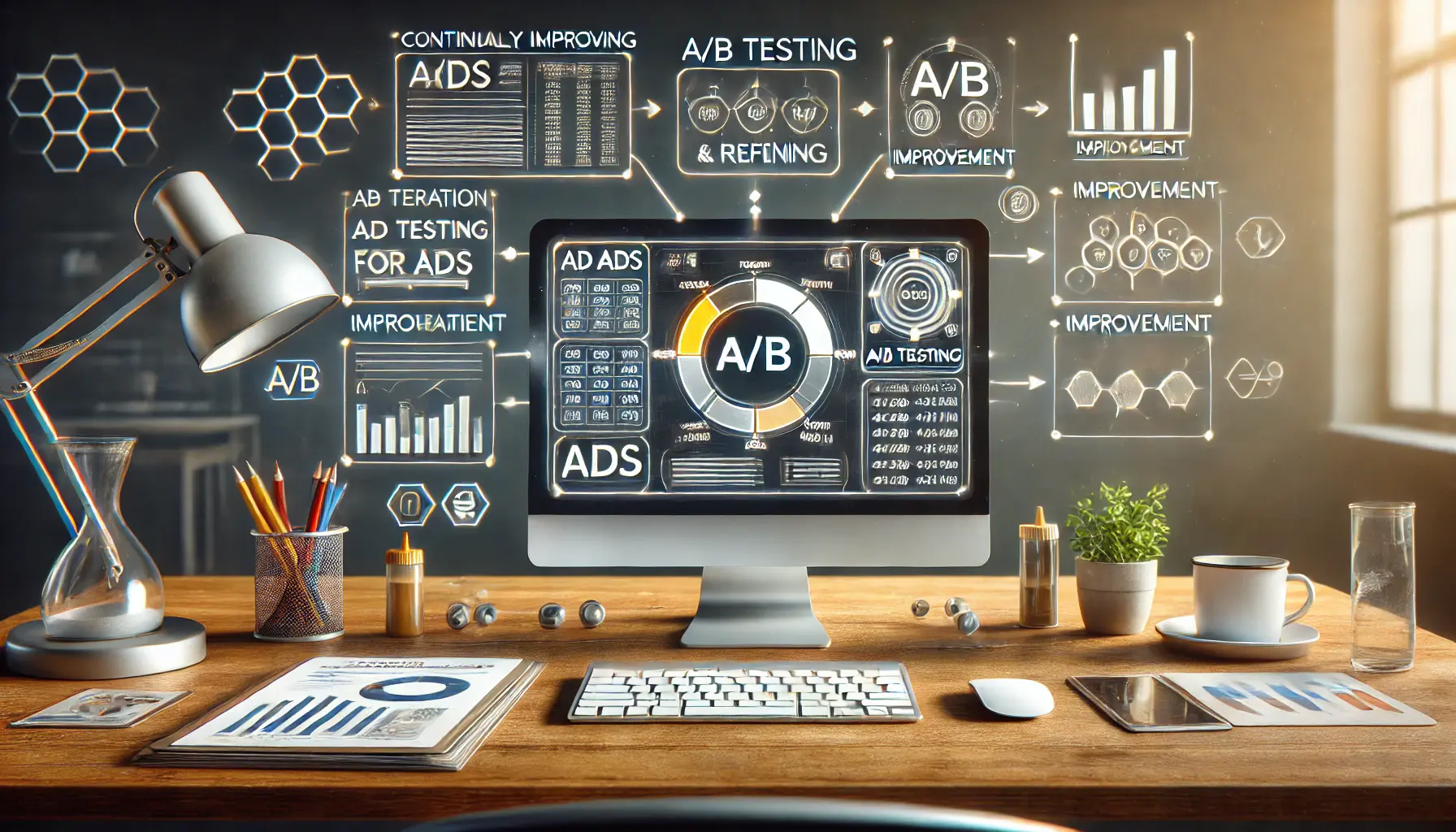
Illustration of iterative testing and refinement for continuous ad improvement.
Continuously Improve through Testing and Refining of Ads
Testing and refining your ads continuously helps you maintain their optimal performance in YouTube advertising.
Testing reveals what resonates most with your audience, while frequent refinement ensures your ads remain effective in an ever-changing advertising landscape.
By regularly testing different elements and observing results, you can boost conversion rates and achieve improved outcomes over time.
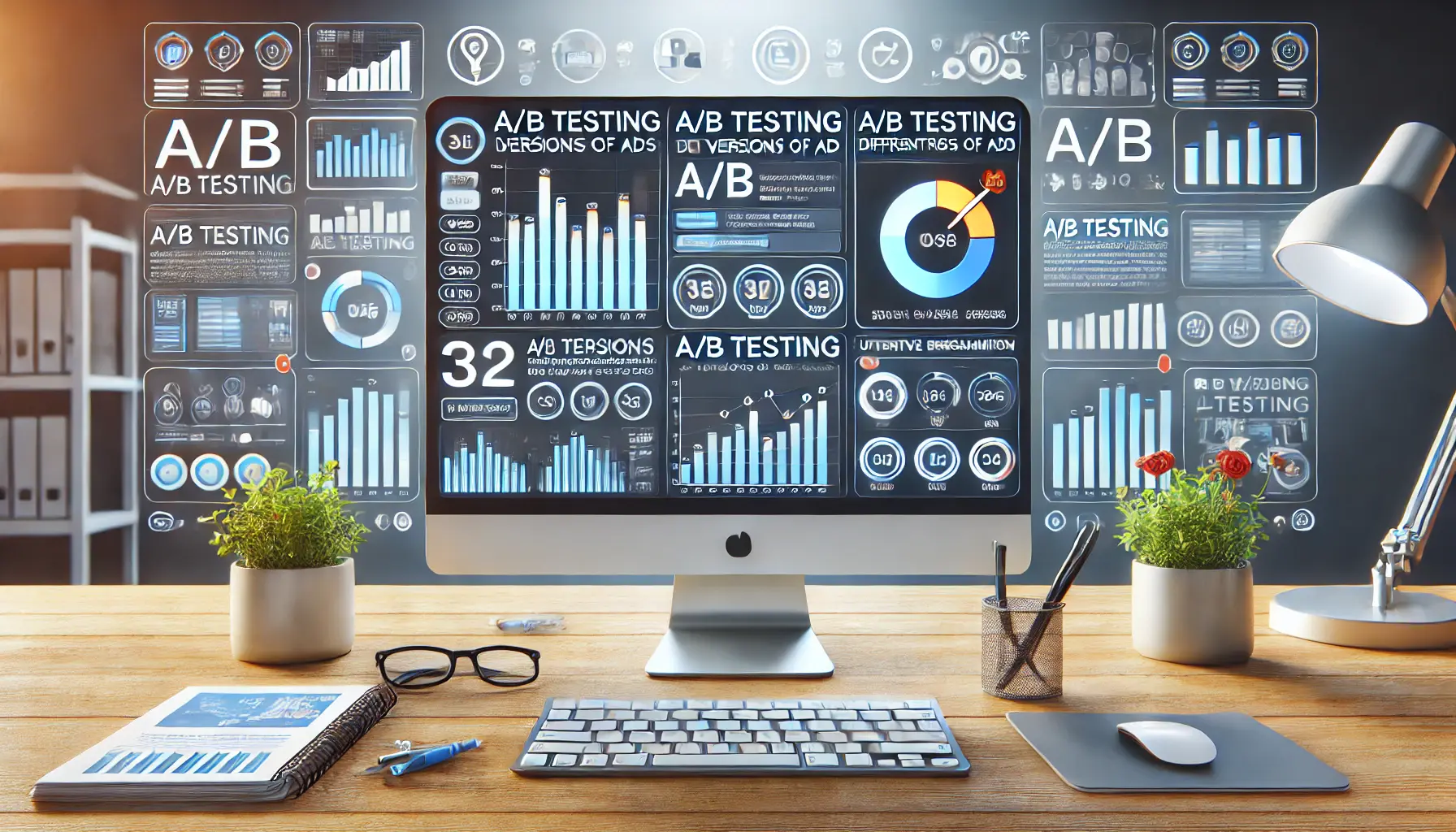
Illustration of A/B testing different ad versions to enhance performance.
A/B Test Different Versions of Ads
A/B testing, also referred to as split testing, is one of the most powerful methods to determine what works best in your ads.
Create two versions of your ad, each with slight variations—whether in the CTA, video length, or messaging.
Running these versions side-by-side allows you to compare their performance and see which version resonates more effectively with your target audience.

Illustration of analyzing test results to refine ad content for better performance.
Analyze Test Results and Refine Content
Once you’ve conducted A/B tests, examine the data to identify what factors led to higher engagement and conversions.
For instance, if one version’s CTA outperforms another, consider using that specific phrasing in future ads.
This ongoing analysis and refinement allow you to develop a deeper understanding of your audience’s preferences and tailor your content accordingly.

Illustration of testing various call-to-action (CTA) options to optimize engagement.
Experiment with Call-to-Action Variations
Testing different call-to-action (CTA) styles can have a significant impact on conversion rates.
Try out CTAs like “Buy Now,” “Get Started,” or “Learn More” to see which drives the highest response.
A clear and actionable CTA guides audiences toward the next step, so experimenting with different variations helps ensure your CTA aligns with their motivations.

Illustration of optimizing ad budgets to enhance conversion rates.
Optimize Your Ad Budgets for Better Conversions
Maximizing conversions also involves optimizing your ad budget.
Regularly track ad spend across campaigns to identify high-performing ads and allocate additional budget to them.
By reinvesting in the most effective ads, you can achieve a higher return on investment and improve conversion rates over time.
In summary, continuous testing and refinement keep your ads relevant and adaptable to current demands.
By conducting A/B testingA method of comparing two versions of an ad to determine which performs better., analyzing results, experimenting with CTAs, and optimizing your budget, you ensure your YouTube ads are positioned for ongoing success and increased conversions in the long run.
Continuous A/B testing and content refinement are essential practices for maintaining ad effectiveness in the competitive YouTube space.
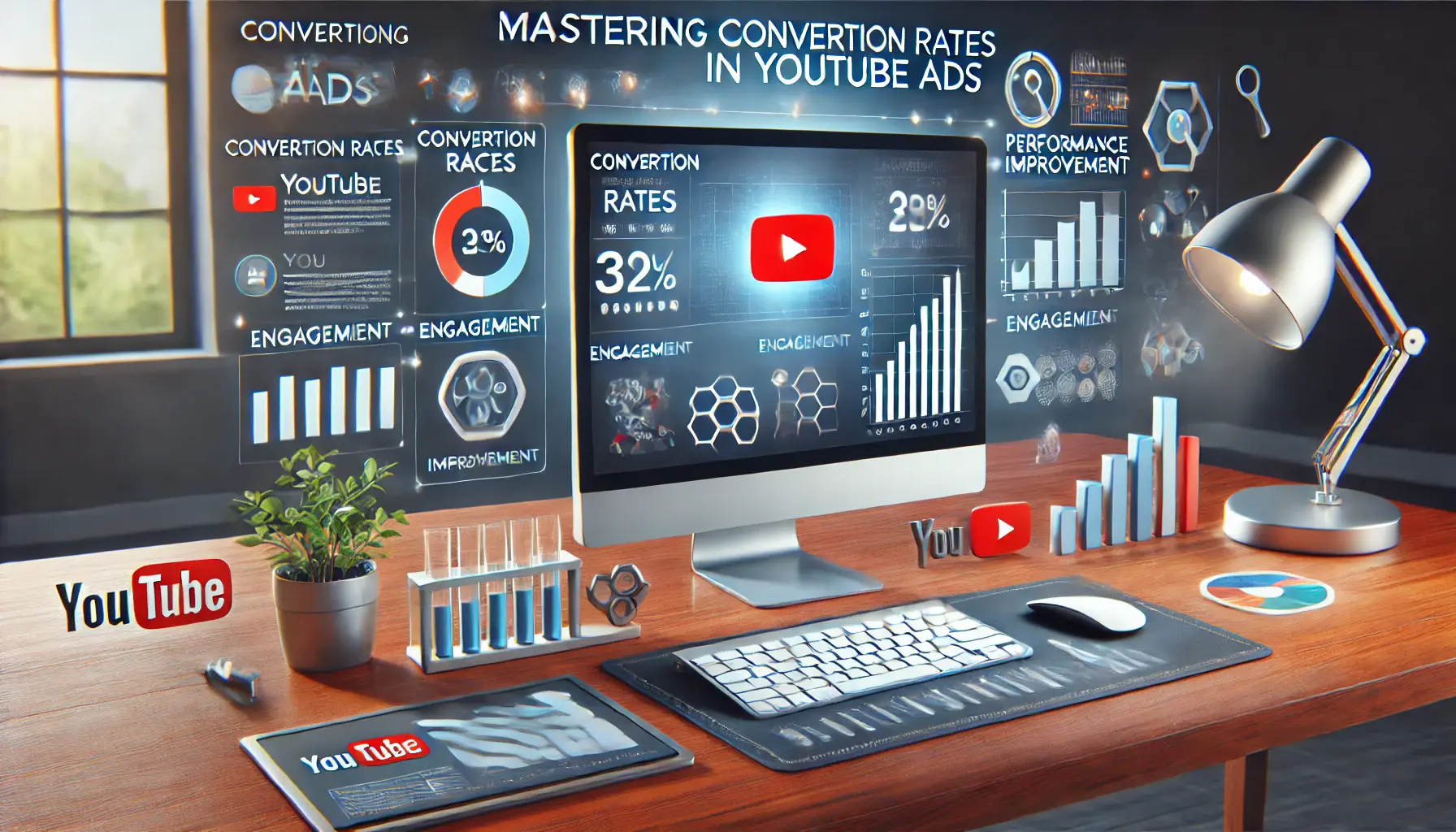
Illustration summarizing key strategies for mastering conversion rates in YouTube ads.
Mastering Conversion Rates in YouTube Ads: A Summary
Effectively driving up conversion rates in YouTube Ads requires a thoughtful blend of strategic targeting, engaging content, smart placements, data-driven optimization, and continuous testing.
Following these essential steps lays a strong foundation for high-impact ads that not only reach but also connect with your target audience.
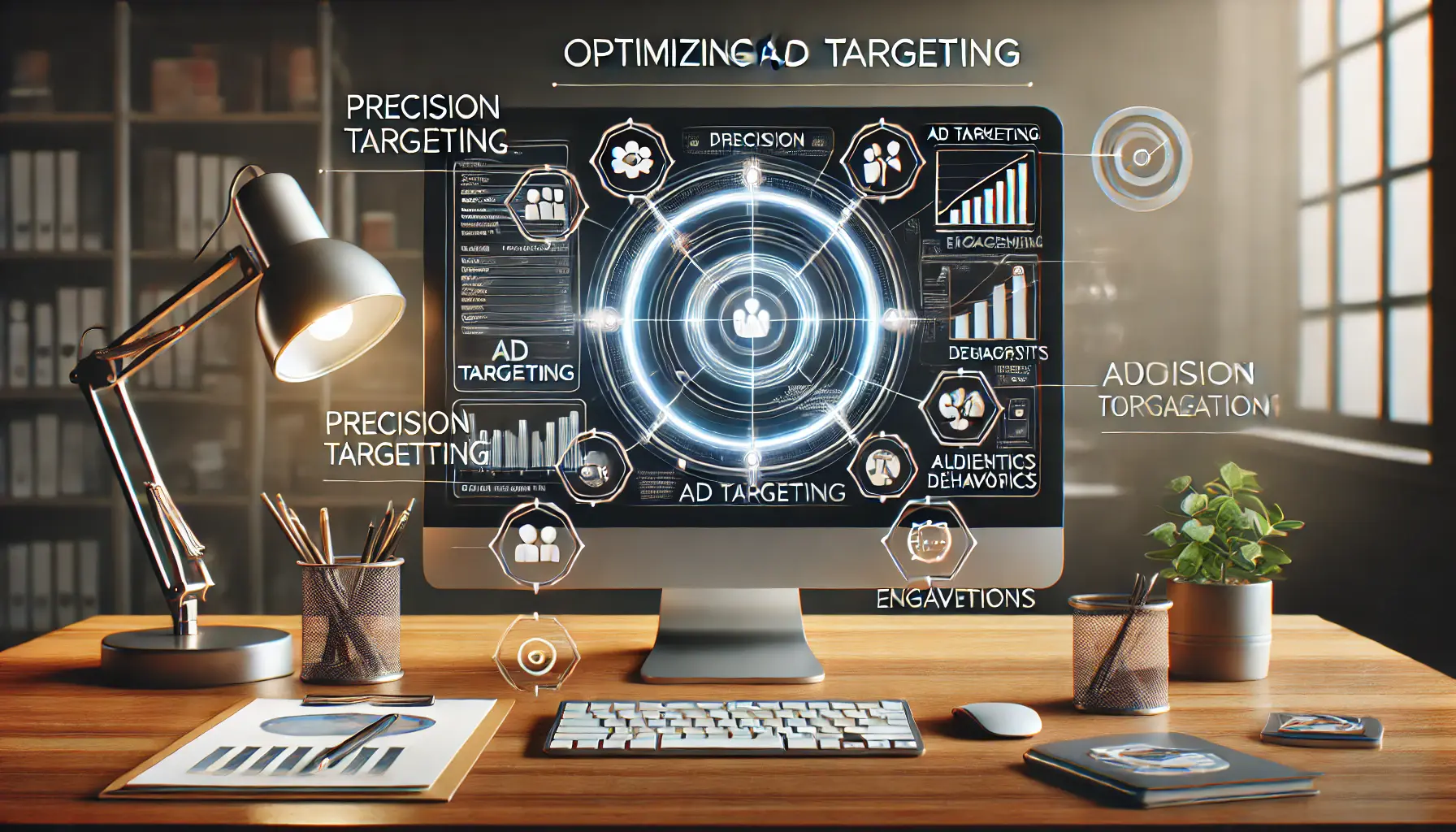
Illustration of optimizing ad targeting for precise audience reach.
1. Optimize Ad Targeting
Reaching the right audience is crucial for driving higher conversion rates.
By defining your ideal viewer persona, leveraging advanced targeting options, and incorporating retargeting, you ensure that only viewers most likely to engage with your brand see your ads.
Thoughtful targeting increases the chances of converting viewers into customers.

Illustration of crafting compelling and engaging content for digital marketing.
2. Create Compelling and Engaging Content
Engaging ad content is the core of any successful YouTube ad campaign.
Starting with a strong hook, using storytelling, and adding clear calls-to-action are key tactics for capturing attention and driving action.
Content that resonates with viewers makes them more likely to connect with your brand and take the next step.
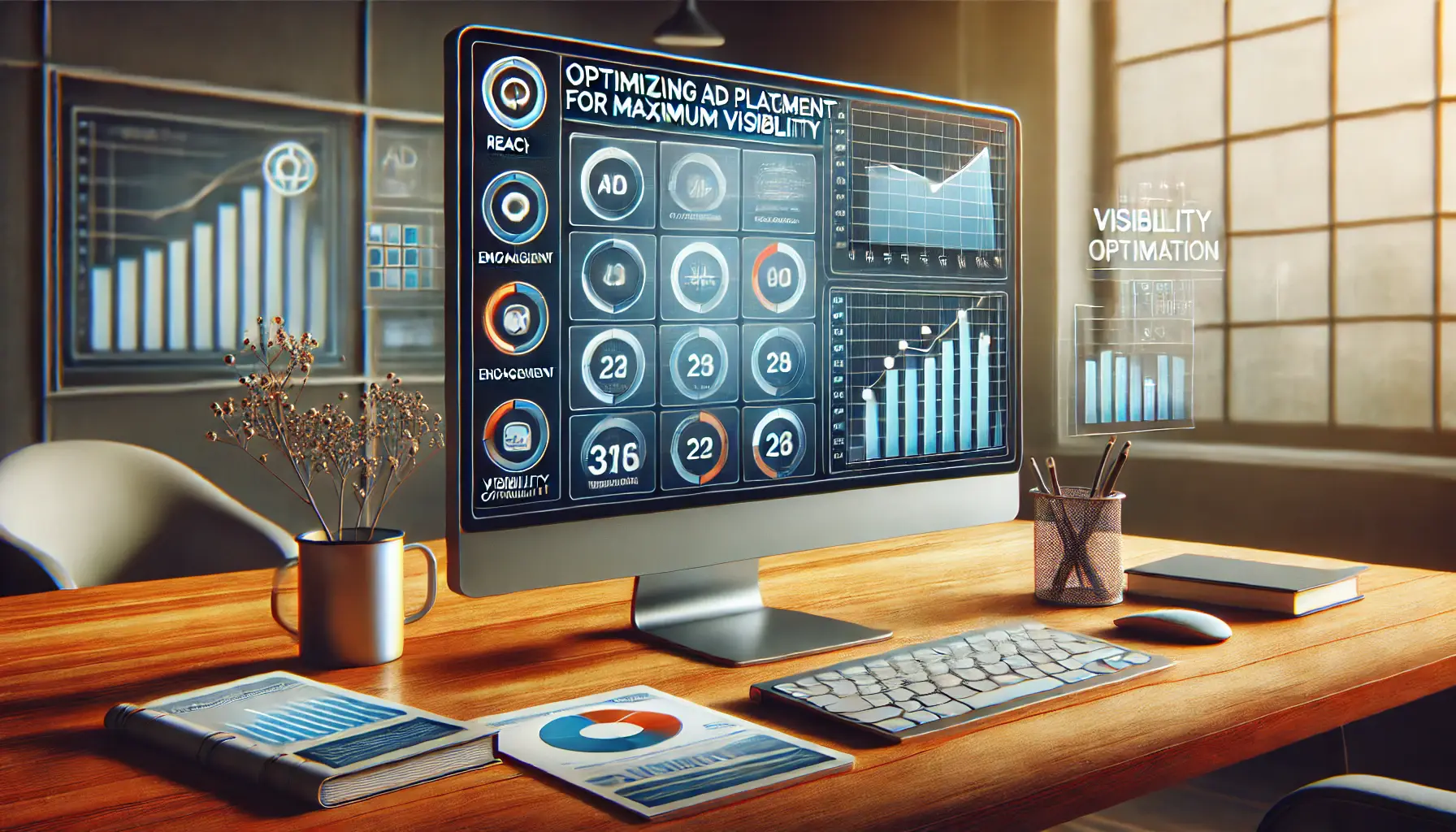
Illustration of optimizing ad placement to enhance visibility in digital marketing.
3. Optimize Ad Placement for Maximum Visibility
Effective ad placement can make all the difference in reaching viewers at the right time and place.
Experimenting with different ad formats, targeting high-intent channels, and focusing on relevant videos increases the likelihood of your ads being viewed by interested audiences—ultimately leading to better engagement and conversions.

Illustration of utilizing data and analytics to optimize digital marketing strategies.
4. Leverage Data and Analytics
Conversion metrics, key performance trends, and real-time data analysis are essential for continuous improvement.
Data-driven decisions ensure that your ads stay aligned with audience preferences, enhancing both effectiveness and reach.
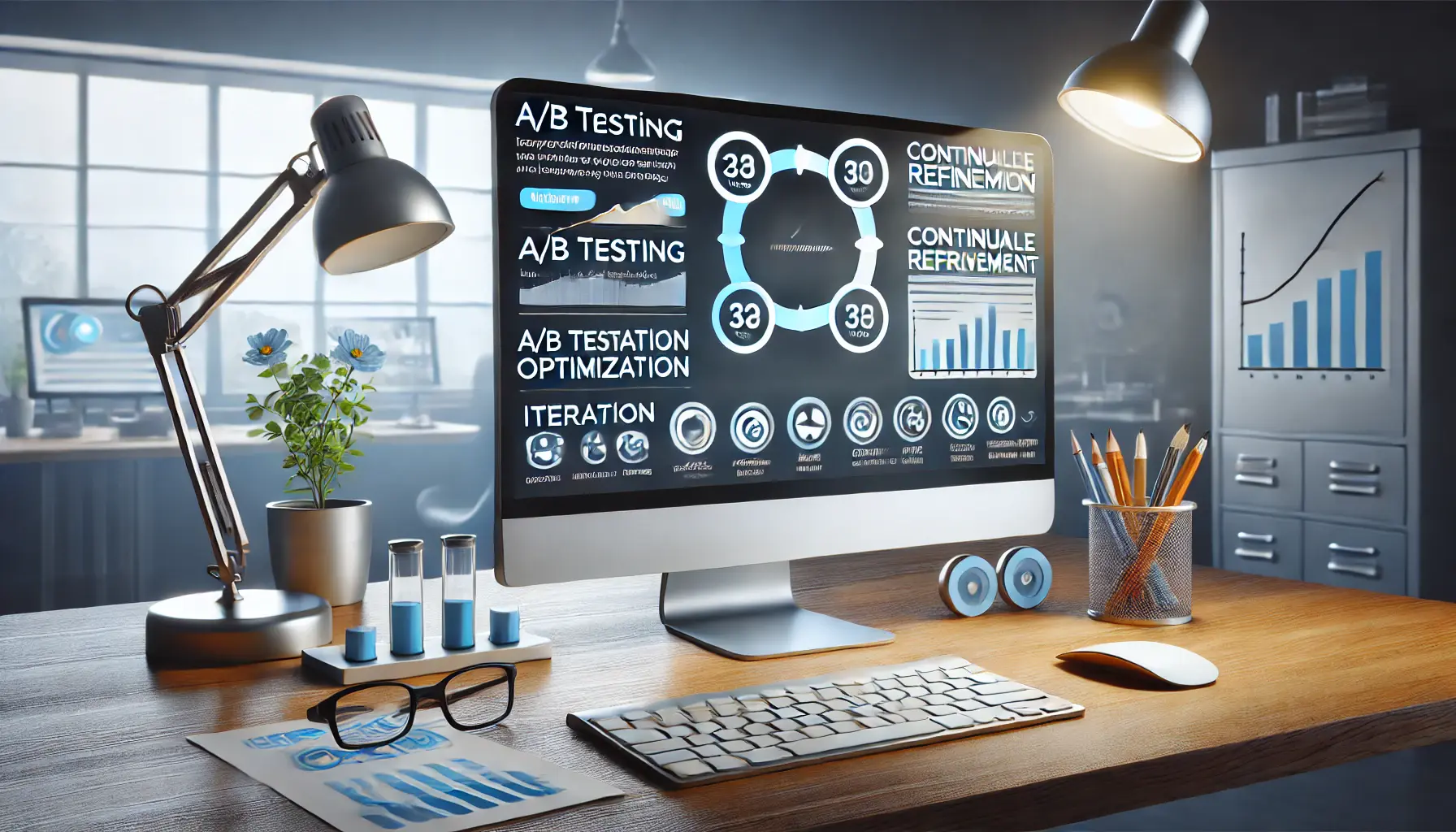
Illustration of continuously testing and refining marketing strategies for improvement.
5. Test and Refine Continuously
Ongoing testing and refinement keep your ads performing at their best.
A/B testing, analyzing results, experimenting with CTAs, and optimizing ad budgets all contribute to maintaining relevance and improving conversion rates over time.
Continuous optimization keeps you competitive in the dynamic field of YouTube advertising.
In conclusion, all these strategies play a crucial role in optimizing conversion rates for YouTube ads.
From initial targeting to final testing, a holistic approach to ad optimization ensures your YouTube ads deliver maximum impact.
By focusing on audience insights, creating engaging content, and committing to continuous improvement, you can unlock the full potential of your YouTube ads and drive meaningful conversions to support your business goals.
Maximizing conversion rates involves strategic targeting, engaging content, optimized placement, data-driven insights, and consistent testing for ongoing improvement.
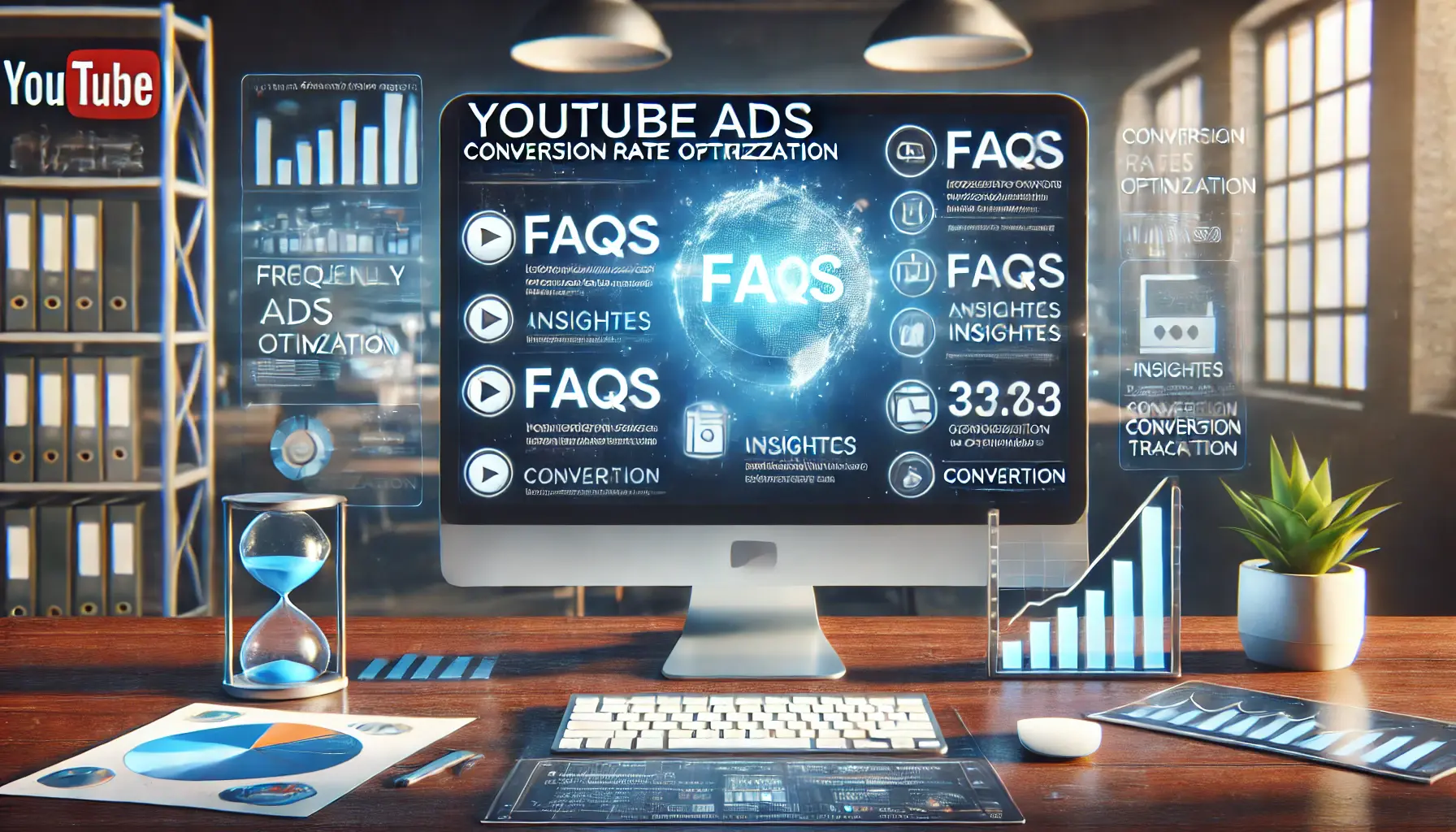
Illustration representing common questions about YouTube Ads conversion optimization.
Your campaigns can be managed by an agency specialized in Google Ads, check out our service page.
10 FAQs About YouTube Ads Conversion Rate Optimization
Following is a set of frequently asked questions on improving conversion rates in YouTube Ads, with quick answers to guide you through essential steps and strategies for optimizing targeting within YouTube Ads.
To improve targeting, define your ideal viewer persona, use advanced targeting options in Google Ads, and apply retargeting strategies to reach viewers most likely to convert.
Effective ad content grabs attention quickly, tells a relatable story, and includes a clear call-to-action.
These elements help capture interest and motivate viewers to take action.
The best ad format depends on your goals.
Skippable ads drive awareness, while non-skippable and bumper ads maximize message visibility and engagement in shorter viewing windows.
Analytics let you track metrics like watch time, click-through rate, and conversions.
These insights allow for data-driven decisions that refine targeting and content for improved results.
A/B testing lets you compare two ad versions to see which performs best.
Continuous testing enables you to optimize ad content and targeting, improving conversion rates over time.
Ad placement impacts both when and where viewers see your ad, affecting engagement.
Strategic placements on high-intent channels or relevant videos can improve conversions.
For a better CTR, ensure your call-to-action is clear and appealing.
Test different CTAs and provide engaging content that encourages viewers to click through to your website.
Effective CTAs include “Shop Now,” “Learn More,” or “Get Started.” Choose phrases that align well with viewer motivations and prompt immediate action.
Regularly monitor analytics and make adjustments based on performance data.
Continuous testing and refinement help keep your ads effective and relevant over time.
